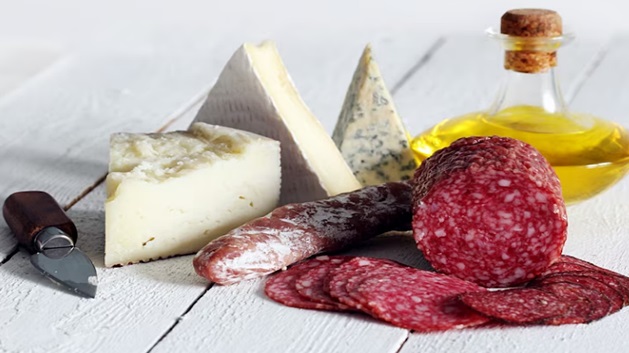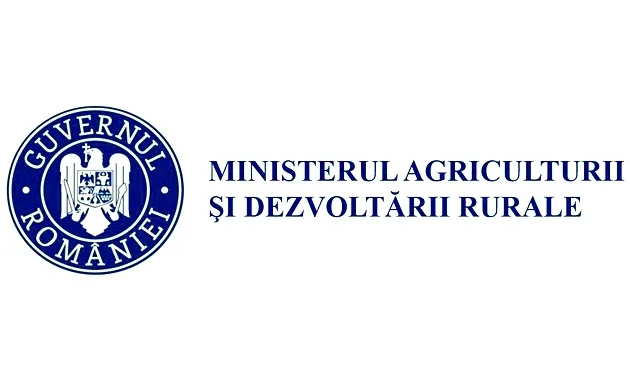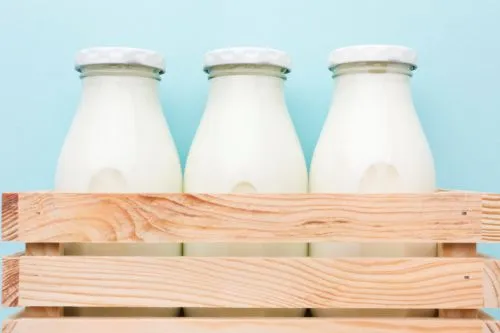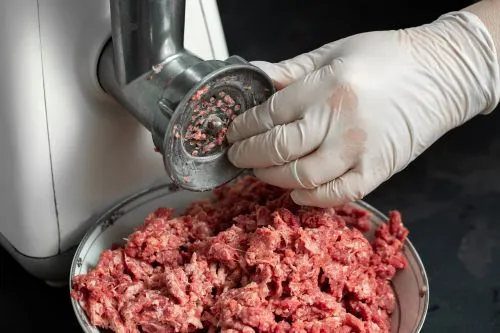
The short-term outlook for the European market of milk, dairy products, meat, and meat products is once again determined by the negative impact of the unprovoked invasion of Ukraine by Russia, especially regarding energy prices, fertilizers, and animal feed. The ongoing inflation and rising food prices are also influencing consumer decisions in the EU, with decreasing purchasing power globally due to economic slowdown. Farmers in the EU continue to face challenges, with input costs still above average, although energy and fertilizer prices have started to decrease since the previous edition of the report. High commodity prices helped offset the high input costs last year, and initial estimates indicate a growth in the average agricultural income in the EU, with significant sectoral and regional disparities, as stated in the spring report of the European Union, "SHORT-TERM OUTLOOK for EU agricultural markets in 2023," presented in this edition of our magazine.
The overall picture
The current macroeconomic forecast for the EU is relatively more positive than in the fall of 2022, despite uncertainties regarding energy supply for the upcoming winter and recent tensions in financial markets.
Natural gas prices have continued to decrease, easing the pressure on the fertilizer market in the EU, but fertilizer prices are still significantly higher than they were two years ago. Food inflation may remain high until the declining input costs are transmitted along the food supply chain, providing relief to consumers.
The EUR-USD exchange rate has once again exceeded parity, but the US dollar is expected to remain relatively strong in the short term. The depreciation of the euro could facilitate EU exports but may also lead to higher agricultural input costs and further inflationary pressures.
The suspension of import duties and export quotas for Ukrainian exports to the EU has helped alleviate the economic pressure caused by the war on Ukrainian agriculture, along with the Solidarity Lanes and Black Sea Grain Initiative, which have effectively facilitated trade.
Some agricultural imports from Ukraine to the EU saw a substantial increase in 2022 and put pressure on regional markets, such as feed grains and poultry meat. In 2023, severe uncertainty surrounding Ukraine's production and trade capacity will have a negative impact on its export prospects.
The monetary market
One year after Russia's unprovoked invasion of Ukraine, the macroeconomic situation in the European Union appears relatively more positive than anticipated in the fall of 2022, despite uncertainties regarding energy supply for the upcoming winter and recent tensions in financial markets.
Natural gas prices have continued to decrease, aided by a sharp decline in consumption, milder winter weather, sufficient storage, and diversified supply.
Additionally, inflation is slowing down, and economic sentiment has improved. 2022 saw a GDP growth of 3.6% compared to 2021. For the current year, the ECB has revised upward the rates of real GDP growth for 2023 by 0.5 percentage points, projecting an estimated growth of 1% for the Eurozone economy. GDP is expected to continue growing at 1.6% for 2024 and 2025.
Forecasts for inflation have also been revised downward, particularly in light of the ECB's decision to further increase interest rates to combat inflation. While Eurozone inflation reached 8.4% in 2022, it is expected to decrease to 5.3% in 2023 and 2.9% in 2024.
Cereal production
Sown areas for 2023/24 winter cereals are estimated to be higher than last year. Winter wheat is expected to remain almost unchanged (20.8 million ha), while winter barley sowing areas should increase to 5.0 million ha (+1.5%).
After a 10% decrease last year, the rye area could partially recover (+4.6%). However, durum wheat and triticale areas are projected to decrease by more than 2.5% (to 2.1 and 2.5 million ha, respectively). For maize, a prolonged winter drought (and therefore reduced water availability for summer irrigation) in many EU producing regions and lower prices could encourage some farmers to switch to sunflowers, resulting in a projected reduction of the planted corn area by 4% from one year to another. year (at 8.5 million ha).
Total EU cereal production in 2023/24, assuming average weather conditions this year, could reach 287.9 million tonnes (+8.4% year-on-year). Soft wheat production is estimated at 130.9 million t, barley at 54.2 million t and maize at 65.0 million t.
Lower grain prices in 2023/24 will stabilize feed demand at 156.5 million tonnes, while food demand could rise slightly to 59.6 million tonnes, according to with the growth of the EU population.
With higher production, EU grain exports could increase by 8% (up to 48 million t). At the same time, EU imports are expected to fall by 25% to 26 million t, also due to the expected recovery in maize production.
Animal production
In addition to weather-related and cost-related production constraints, animal diseases add an additional layer of uncertainty to the prospects of animal production in the EU.
Highly Pathogenic Avian Influenza (HPAI) entails significant uncertainty and economic risk for the poultry sector's outlook. A large number of outbreaks were reported in both Europe and North America in 2022, and these are expected to remain a threat throughout the year rather than being seasonal.
On the other hand, HPAI should primarily affect market access for EU exports, while its impact on poultry meat supply remains marginal. HPAI outbreaks, leading to either national bans or regionalization, contributed to a decline in EU export volumes (-10% from the previous year) in 2022, and a further decrease (-5%) is estimated in the current marketing year.
African Swine Fever (ASF) outbreaks continue to limit the export potential of pork from the EU to the Chinese market (a 40% reduction in exports in 2022, partly driven by reduced supply).
It is assumed that the ASF situation will not fundamentally change in 2023, which will continue to result in reduced supply in affected EU countries and limit the extent to which EU pork producers benefit from increasing import demand from China.
Redirecting exports to other destinations such as Japan (+23% estimated export growth), the Philippines (+21%), South Korea (+12%), and Australia (+19%) could mitigate the negative impact on export volumes, but overall, EU pork exports are expected to continue declining in 2023.
The number of slaughtering of dairy cows will increase
Despite expectations of lower production, EU milk production in 2022 remained fairly stable. However, the lower fat and protein content of milk reduced its availability for processing. EU dairy exports fell in volume (but were at a record in value terms) due to high EU prices, tight supply and lower imports from China. On the other hand, domestic dairy consumption increased slightly despite rising food inflation.
In 2023, cow culling is likely to increase in response to lower raw milk prices, which could also be partially offset by increased milk production (assuming normal weather conditions). Despite a slight decrease in EU milk supplies (-0.2%), processing availability could still be held steady due to higher milk fat and protein content.
The cheese and whey processing flow is expected to be favored by the industry due to the EU's export potential and relatively stable domestic cheese consumption. Butter production and SMP could decline due to higher-than-usual stocks (taken over from 2022), which could partially offset the increase in exports and domestic use.
Overall, EU consumption is expected to experience some shift in consumer preferences towards lower quality products, influencing value rather than total volume. The recovery of import demand in China would be an important factor for the growth of EU exports.
Butter price developments and SMP allow the calculation of an "equivalent EU milk price" which, with a time lag of 2-3 months, anticipates raw milk price trends. Rising seasonal availability due to peak spring production in the EU and existing stocks carried over from last year are likely to keep dairy prices on a downward trend.
The extent of such a decline will, however, depend on demand developments, with export growth held back by existing stocks in China in 2022. Some orders were delayed as buyers expected further price cuts and rising inflation in the EU and across world.
Cattle numbers will decrease
In 2023, a fall in the price of raw milk in the EU is likely to lead to increased slaughter, as the costs of animal feed and other inputs are likely to remain high (despite the fact that costs are expected to exceed the peak reached last year).
Overall, the EU dairy herd could fall by 1%. To some extent, this could also be boosted by higher beef prices. The decline in the dairy herd could be offset by increased harvests (0.8%), assuming normal weather conditions and thus eliminating the negative impact of hot and dry weather.
This assumption could also have a positive impact on milk fat and protein content, which could be 0.2% above last year's levels.
In light of all these factors, overall milk production in the EU could decrease (-0.2%), especially in the second half of the year, but the increase in milk fat and protein could keep milk availability for processing stable.
The European pig sector is heading for crisis
EU pork production fell in most member states and by an average of 5.6% in 2022. Major producers such as Germany, Poland, Denmark, Spain, Belgium and Italy saw large declines.
According to the December 2022 livestock survey, the number of breeding sows fell by half a million head in 2022 (-4.6%), after a decrease of 370,000 head in 2021 (-3.6%). The current stock of fattening pigs is also very low in all categories.
In 2023, it is assumed that the PPA situation will not change dramatically and this will continue to trigger strong responses in affected countries and among trading partners.
As feed prices slowly decline, the main pressure on margins is expected to cool. This could also lead to slightly higher case weights. Overall, EU pork production is expected to further decline by a further 5% in 2023.
Due to tight supply, EU pork prices continue to reach record levels. This makes EU pork exports relatively less competitive than other exporters on the global market.
EU pork exports fell by more than 16% in 2022, mainly stemming from a 50% reduction in exports to China, which is not expected to recover in 2023. This was partially offset by export diversion to other destinations such as Japan (+23%), the Philippines (+21%), South Korea (+12%) and Australia (+19%). Overall, EU pork exports could fall further by 3% in 2023.
EU imports of UK pork increased by almost 28% in 2022, accounting for just under 85% of total EU imports. As UK production is expected to decline, there is little potential for increased imports from that side. EU pork imports are therefore expected to grow by just 2% in 2023.
Due to limited supply, EU domestic consumption fell by 2.8% in 2022, reaching an average of 31.8 kg per capita. This would further decrease in 2023 by 5.9% and reach its lowest point (about 30 kg per capita, on average).
Poultry will benefit from the influence of inflation
In 2022, EU poultry production fell again, albeit less than the previous year (-1.7%). In particular, this was driven by declines in the main producing countries such as France (-12%), Italy (-9%) and Germany (-3%). On the other hand, Poland increased its production by 6%. Given developments in 2022, it is assumed that the emergence of highly pathogenic avian influenza (HPAI) will remain a year-round threat rather than being seasonal.
Its direct impact on poultry production is limited, as production could recover quickly. However, the damage to EU exports caused by the introduction of import bans by third countries is of greater magnitude.
Driven by tight supply and good demand, broiler prices in the EU have continued to rise and have reached exceptionally high levels since April 2022. This has partly contributed to the transfer of high feed and energy costs along the chain. From 2023, producer prices tend to be more stable.
As feed and energy costs are declining from the very high gh seen last year, some recovery in production may occur in 2023. Therefore, EU poultry production is likely to increase by around 1.1% . Poultry demand benefits from general inflation as consumers substitute more expensive meat (beef, pork) for cheaper poultry. This could support the growth of poultry consumption in the EU in 2023 (+2.5%).
Romania remains the leader on the sheep market
The December 2022 livestock survey showed a significant decrease in the size of the sheep and goat population in the EU by around 1.5 million heads, especially in Spain and France. This is the third year in a row that the herd has declined by more than 1 million head. On the other hand, Romania registered an increase of over 360,000 heads. Moreover, more sheep were put to the ram in Romania and in France, compared to last year.
In 2022, sheep and goat meat production decreased by only 0.6%. Ireland and Romania increased slaughters, while Germany, Spain and France reported notable decreases. Despite favorable prices, the substantial reduction in herds is hampering EU production.
Lower feed prices and better grazing conditions could improve slaughter weights year-on-year. Overall, a 1.2% production decline is still expected in 2023. This could ensure a high level of domestic prices.
EU sheepmeat exports fell by 6% in 2022. A lack of domestic supply and relatively high prices could push exports further down in 2023 (-1%).
EU live animal exports rose by 1.2% in 2022, despite a difficult first half of the year and high domestic prices. Most major destinations saw declines, with the exception of Jordan and Israel. In fact, the increase in exports to these two destinations alone more than offset the declines in most other destinations.
Romania is expected to continue redirecting part of its live animals to Israel and Bulgaria due to the highly remunerative prices, instead of exporting them to non-EU countries. Overall, EU live animal exports are set to fall by 3.5% in 2023 due to high domestic prices and the difficult transport situation across the Black Sea.
EU imports of sheepmeat increased by almost 23% in 2022, coming from New Zealand, the UK and Australia. More New Zealand imports are also expected in 2023, mainly due to lower demand from China and fewer logistical hurdles.
Overall, EU imports could reach a further 8% growth this year, also boosted by more competitive shipments from the UK and Australia. These additional imports are expected to put some pressure on high EU prices. Per capita consumption would remain fairly stable in 2023.




